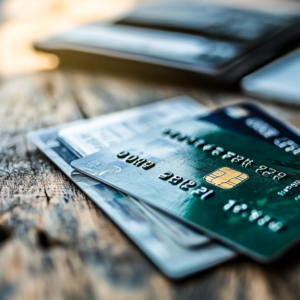This article may contain references to products or services from one or more of our advertisers or partners. We may receive compensation when you click on links to those products or services. Nonetheless, our opinions are our own.
The information presented in this article is accurate to the best of our knowledge at the time of publication. However, information is subject to change, and no guarantees are made about the continued accuracy or completeness of this content after its publication date.
- Introduction
- Defining Your Restaurant Concept
- Identifying Your Target Audience
- Selecting A Niche And Cuisine Style
- Crafting Your Business Plan
- Setting Realistic Financial Goals
- Legalities And Paperwork
- Location And Space
- Negotiating Lease Terms
- Designing Your Space
- Setting Up Your Restaurant
- Building Your Team
- Menu Development And Pricing
- Wrapping Up Your Restaurant Startup Plan
- Frequently Asked Questions
- What are the first steps in opening a restaurant?
- How can market research help in developing a concept for a new restaurant?
- What are some key factors to consider when choosing a location for a restaurant?
- How can I create an effective business plan?
- What permits and licenses do I need to open a restaurant?
- How important are branding and marketing in launching a successful restaurant business?
- What equipment is essential for a new restaurant?
- How can I ensure great customer service in my restaurant?
- How long does it typically take for a restaurant to turn a profit?
- What are the common challenges of starting a restaurant, and how can I overcome them?
- Recommended Reads
Introduction
Starting a restaurant is an exciting venture but also comes with significant challenges. In the competitive restaurant industry, success demands a clear vision, a strong plan, and a substantial investment of time and resources. This comprehensive guide will walk you through every step, from developing your concept to planning your grand opening. Learn how to navigate startup costs, create a compelling business plan, and establish a foundation for long-term success.
Defining Your Restaurant Concept
A well-defined concept is the cornerstone of your restaurant’s success. Your concept should go beyond the type of cuisine served; it should encapsulate the identity and experience you want to provide. Consider what sets your idea apart and how it addresses unmet needs in the market. Whether it’s a trendy café, a family-friendly eatery, or an upscale fine-dining venue, aligning your concept with your target market is essential.
Identifying Your Target Audience
Understanding your target audience is fundamental. This group will drive your business and influence decisions on your menu, pricing, and branding. Conduct thorough market research to determine your audience’s preferences, demographics, and dining habits. For example, a restaurant in a bustling business district will likely attract office workers seeking quick yet quality meals, while a suburban location might cater to families looking for a cozy dining experience.
Selecting A Niche And Cuisine Style
Choosing a niche and cuisine style allows you to focus on a specific segment of the market. Consider your strengths, passions, and current food trends. Will your restaurant specialize in authentic Italian dishes, fusion cuisine, or plant-based meals? Highlighting a distinct culinary style will make your restaurant stand out. Use fresh, local ingredients and authentic recipes to create a menu that resonates with your target audience.
Crafting Your Business Plan
A robust business plan is critical for attracting investors and guiding your operations. It should outline your restaurant’s concept, target market, financial projections, and operational strategies.
Components Of A Restaurant Business Plan
- Executive Summary: A concise overview of your concept, mission, and key objectives.
- Market Analysis: Insights into your target market, competitors, and industry trends.
- Menu And Concept: Details about your cuisine, menu items, and restaurant ambiance.
- Marketing Strategy: Plans for promotions, social media engagement, and grand opening events.
- Financial Projections: Income statements, cash flow forecasts, and a break-even analysis.
Setting Realistic Financial Goals
Estimate startup costs, including rent, equipment, licenses, and initial inventory. Calculate ongoing expenses like payroll, utilities, and food costs. Establish financial benchmarks, such as a realistic timeline for breaking even. Regularly review your financial plan and adjust as needed to ensure sustainability.
Voted "Best Overall Budgeting App" by Forbes and WSJ
Monarch Money helps you budget, track spending, set goals, and plan your financial future—all in one app.
Get 50% OFF your first year with code MONARCHVIP
Legalities And Paperwork
Complying with legal requirements is vital to operating smoothly. Choose an appropriate business structure, such as a sole proprietorship, LLC, or corporation, based on liability and tax considerations. Consult with a legal advisor to determine the best option for your restaurant.
Securing Licenses, Permits, And Insurance
- Obtain food service permits and pass health department inspections.
- If serving alcohol, apply for a liquor license, which may involve background checks and fees.
- Purchase liability, property, and workers’ compensation insurance to protect against risks.
Location And Space
Selecting the right location can significantly impact your restaurant’s visibility and profitability. High foot traffic, easy accessibility, and proximity to your target market are key factors.
Negotiating Lease Terms
When finalizing your lease, focus on rent, lease duration, and renewal terms. Seek legal advice to ensure favorable terms and avoid costly pitfalls.
Designing Your Space
Your restaurant’s ambiance should align with your brand and appeal to your target audience. Consider layout, lighting, and decor to create a welcoming environment. Use sound-absorbing materials and strategically placed lighting to enhance the dining experience.
Setting Up Your Restaurant
Equipping your kitchen and dining area is essential for smooth operations and customer satisfaction.
Essential Equipment And Supplies
- Commercial ovens
- Refrigerators
- Dishwashers
- Mixers
Maintain and regularly inspect equipment to ensure efficiency and longevity.
Furnishing Your Dining Area
Choose comfortable, durable furniture that complements your theme. Pay attention to details like table settings and decor to create a cohesive experience.
Implementing Your POS And Management Software
A reliable POS system streamlines operations, from tracking sales to managing inventory. Look for systems that integrate with other tools and offer features like reporting and scheduling.
Building Your Team
Your staff plays a crucial role in delivering exceptional service. Hire skilled kitchen staff and friendly front-of-house employees who align with your restaurant’s values.
Training For Excellence In Service
Provide comprehensive training on food safety, customer service, and problem-solving. Encourage teamwork and offer growth opportunities to foster a motivated and dedicated team.
Your menu is a reflection of your brand and culinary expertise. Design a balanced menu with a mix of popular and unique dishes.
Pricing Strategies For Profit
Base prices on food costs, labor, and market demand. Regularly review prices to maintain profitability while staying competitive.
Wrapping Up Your Restaurant Startup Plan
Starting a restaurant requires vision, dedication, and strategic planning. By defining your concept, crafting a strong business plan, and focusing on customer experience, you can build a successful restaurant. Each detail, from location to menu design, contributes to creating a memorable dining experience. Stay adaptable, embrace challenges, and take pride in your culinary journey.
Frequently Asked Questions
What are the first steps in opening a restaurant?
Begin with market research, develop a strong concept, and create a business plan. Secure funding, choose a location, and obtain the necessary licenses.
How can market research help in developing a concept for a new restaurant?
Market research helps you discover your target market. It reveals what they want and need. This information lets you design a restaurant concept that suits your customers.
What are some key factors to consider when choosing a location for a restaurant?
Consider foot traffic, visibility, accessibility, proximity to your target market, competition, and local laws. Adequate parking and favorable lease terms are also crucial.
How can I create an effective business plan?
Include a clear concept, market analysis, and financial projections. Use resources like the SBA for guidance. Highlight your unique value proposition to attract investors.
What permits and licenses do I need to open a restaurant?
You need food service permits, health inspections, and a liquor license if applicable. Requirements vary by state, so check with local authorities.
How important are branding and marketing in launching a successful restaurant business?
Branding and marketing are essential for gaining visibility and attracting customers. Utilize social media, promotions, and events to build a strong brand presence.
What equipment is essential for a new restaurant?
Essential equipment includes ovens, refrigerators, ranges, dishwashers, and POS systems. Choose durable and energy-efficient options to reduce costs.
How can I ensure great customer service in my restaurant?
Train staff thoroughly in customer service and problem-solving. Foster teamwork and encourage employees to go above and beyond for guests.
How long does it typically take for a restaurant to turn a profit?
It varies, but most restaurants take 6–18 months to become profitable. Factors like location, marketing, and management efficiency play a key role.
What are the common challenges of starting a restaurant, and how can I overcome them?
Challenges include high startup costs, competition, and staffing issues. Overcome these by planning carefully, hiring skilled staff, and managing finances wisely.

Reviewed and edited by Albert Fang.
See a typo or want to suggest an edit/revision to the content? Use the contact us form to provide feedback.
At FangWallet, we value editorial integrity and open collaboration in curating quality content for readers to enjoy. Much appreciated for the assist.
Did you like our article and find it insightful? We encourage sharing the article link with family and friends to benefit as well - better yet, sharing on social media. Thank you for the support! 🍉
Article Title: How to Start a Restaurant Business: From Concept to Launch
https://fangwallet.com/2025/08/01/how-to-start-a-restaurant-business-from-concept-to-launch/The FangWallet Promise
FangWallet is an editorially independent resource - founded on breaking down challenging financial concepts for anyone to understand since 2014. While we adhere to editorial integrity, note that this post may contain references to products from our partners.
The FangWallet promise is always to have your best interest in mind and be transparent and honest about the financial picture.
Become an Insider

Subscribe to get a free daily budget planner printable to help get your money on track!
Make passive money the right way. No spam.
Editorial Disclaimer: The editorial content on this page is not provided by any of the companies mentioned. The opinions expressed here are the author's alone.
The content of this website is for informational purposes only and does not represent investment advice, or an offer or solicitation to buy or sell any security, investment, or product. Investors are encouraged to do their own due diligence, and, if necessary, consult professional advising before making any investment decisions. Investing involves a high degree of risk, and financial losses may occur including the potential loss of principal.
Source Citation References:
+ Inspo
There are no additional citations or references to note for this article at this time.












































